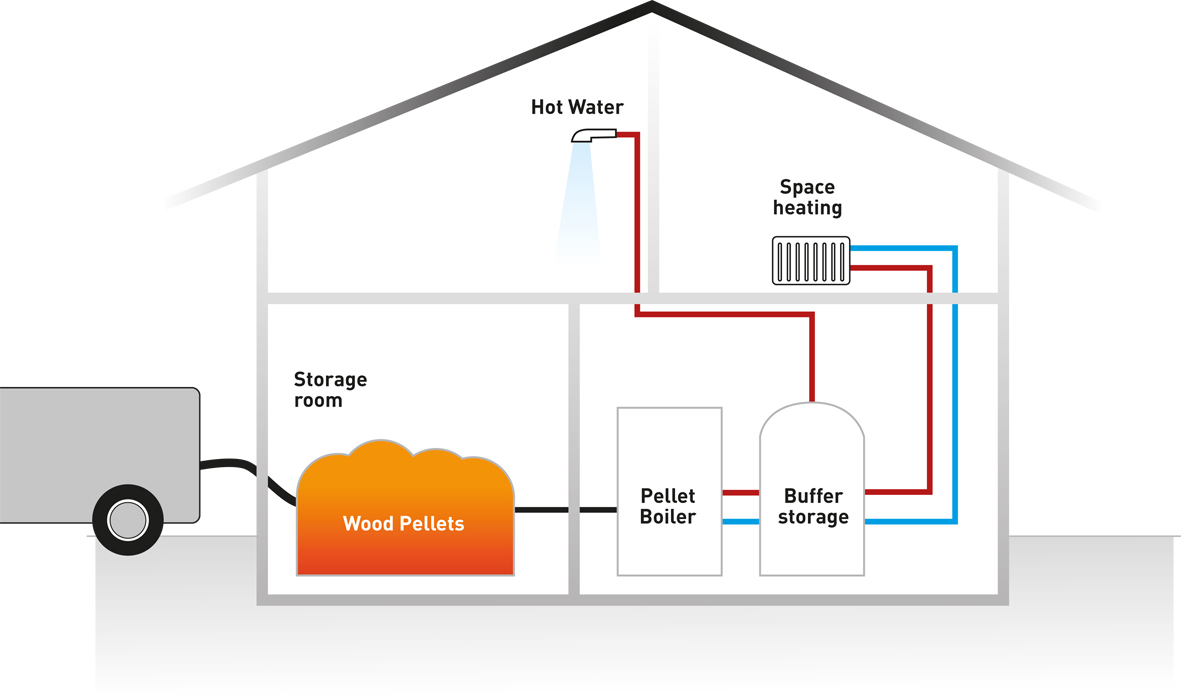
Biomass heating systems burn wood pellets, chips or logs to provide warmth in a single room or to power central heating, hot water and underfloor heating systems. These systems can be equally efficient in a domestic or commercial situation.
Biomass boiler systems operate in the same way as a conventional boiler system, with the exception of fuel delivery. Pellets or wood chips are fed through an auger which is automatically controlled by the boiler. As the fuel enters the boiler, the material is ignited either by elements or an electric blower on the initial start up. The hot gases are then passed through a heat exchanger and the heat is transferred to the water used in your central heating system.

Choosing a wood-fuelled heating system:
Boiler or stove?
Boilers can be used in place of a standard gas or oil boiler to heat radiators for a whole house, and to heat the hot water. Stoves are used to heat a single room, usually in conjunction with other heating systems, but may also have a back boiler to provide hot water.
Chips, pellets or logs?
Chips are not suitable for heating a single house if you are short of space, but can show greater savings compared to pellets. They are best used in larger buildings or groups of houses. Pellets are much easier to use and much more controllable than logs. Pellet boilers can run automatically in much the same way that gas or oil boilers operate. Log-burning stoves and boilers have to be filled with wood by hand; most pellet and chip burners use automatic fuel feeders which refill them at regular intervals. Logs require considerably more work, and you will need a lot of logs to heat a whole house, but they can be cheaper than pellets if you have a good local supply.
Do you have a local fuel supplier?
Some companies now offer deliveries of pellets anywhere in mainland Britain and Northern Ireland; supply of logs is much more variable.
Do you have space?
Wood boilers are larger than gas or oil equivalents. You will also need space to store the fuel: somewhere that's handy for deliveries but also appropriate for feeding the boiler.
Do you have somewhere to put the flue?
You will need a flue which meets the regulations for wood-burning appliances: a new insulated stainless steel flue pipe or an existing chimney - though chimneys normally need lining to make them safe and legal.
Do you need permission?
You may not need planning permission, but you should always check. All new wood heating systems have to comply with building regulations, and the best way to ensure this is to use an installer who is a member of a competent person scheme, such as HETAS.